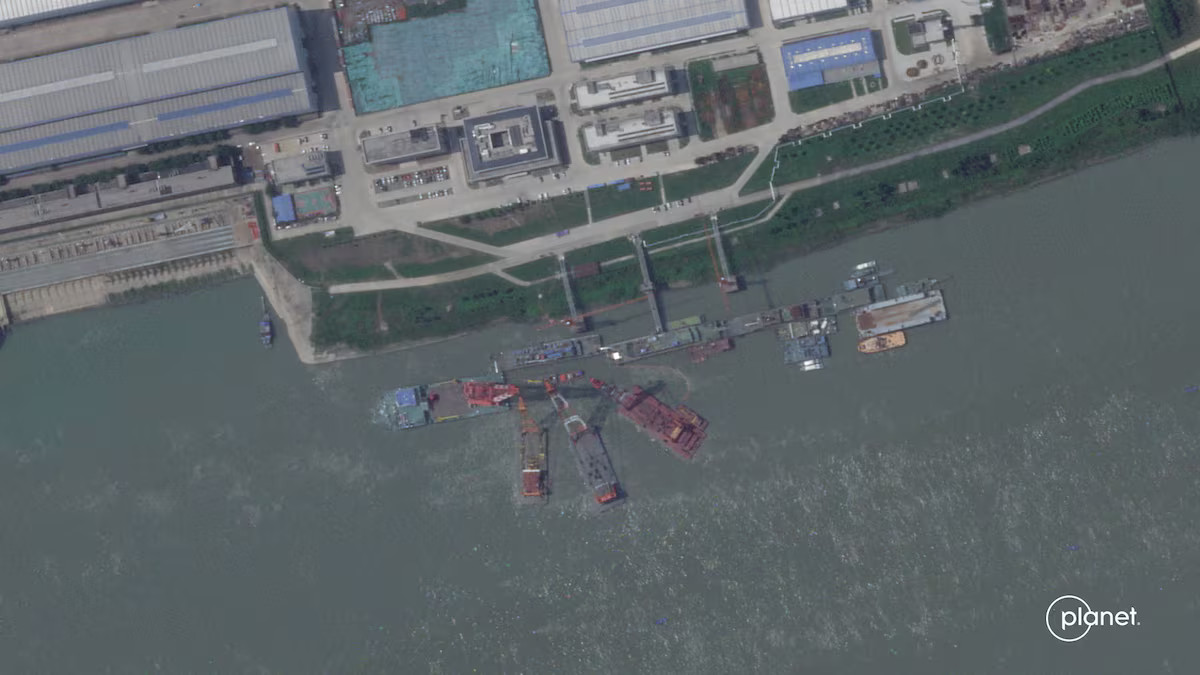
In the spring, the newest Zhou-class nuclear submarine of the People’s Liberation Army Navy sank.
The Wall Street Journal reported on this.
The incident, which the Chinese authorities tried to hide and had not previously been disclosed, occurred at a shipyard near Wuhan in late May or early June.
After the submarine sank, large floating cranes arrived to raise it from the bottom of the river.

Neither the People’s Liberation Army nor the local authorities have recognized the incident.
The United States does not know whether the submarine had nuclear fuel on board when it sank, but experts outside the U.S. government believe it is likely.
It is not known whether there were any fatalities among the crew, and the Chinese authorities, according to the newspaper, have not even taken water samples to assess possible radiation contamination.
“The risk of nuclear leakage is likely low because the submarine was not at sea and its reactors were probably not operating at high power levels,” the WSJ writes, citing a former U.S. submariner and senior fellow at the Center for a New American Security.

The submarine was built by the state-owned China State Shipbuilding Corp. and was spotted at a dock on the Yangtze River in late May undergoing final equipment before being put to sea.
Recently, it was reported that China had launched the DF-41 intercontinental ballistic missile for the first time in 40 years, having launched it beyond its borders.
The ballistic missile with a nuclear warhead fell into a designated area in the international waters of the Pacific Ocean.
The last time China conducted an international ICBM test was in the 1980s. Since then, similar intercontinental missile launches have been conducted domestically in the Taklamakan Desert.
Підтримати нас можна через:
Приват: 5169 3351 0164 7408 PayPal - [email protected] Стати нашим патроном за лінком ⬇
Subscribe to our newsletter
or on ours Telegram
Thank you!!
You are subscribed to our newsletter